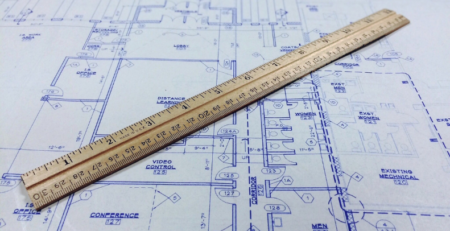How Can Bridge Loans Assist Property Purchases?
Short-term, high-interest rate loans are known as “Bridge Loans.” This is aimed to aid customers wishing to finalise their property acquisition prior to selling their present home. Before you receive your long-term funding, which will come from the sale of your former house, you can get a loan to “bridge the gap.”
It can be difficult to buy a property, especially if you’re also trying to sell your current home at the same time. Property chains and survey concerns are only two examples of things that might slow down the purchasing and selling process in real estate transactions. It’s possible that buyers will have already discovered a home to buy before they’ve sold their current one. That’s when a bridge loan may help you out!
Bridge loans are not just available for property transactions. Many businesses use them to help pay their employees for work that the business clients haven’t yet paid for. Typically, the business will submit copies of the invoice for work done to the lender, and the lender will advance a percentage of the payment before the client is due to pay it.
A bridging loan acts as a bridge between the purchase of a new house and the sale of your old one. For a brief period of time, the individual or persons taking out the loan would own two properties. This implies that if the sale of their present property takes longer than planned, a buyer withdraws, or the home sells for less than expected, they will be saddled with a significant amount of secured debt.
The pros and cons of bridging loans
Like with most things, there are pros and cons when deciding to use bridging loans. We will first take a brief look at the pros and then at the cons.
Pros
- It can help facilitate the buying and selling of property when otherwise it isn’t possible due to a lack of temporary funds.
- It has a fast application process to complete.
- The borrowing is flexible and very useful.
Cons
- The inters rates are high compared to normal borrowing rates.
- The fees due for this service are high.
- Your property is used as collateral to secure the loan.
How do these types of loans work in practice?
Borrowers of bridging loans usually have access to two types of bridging loans: either a “closed” or “open” bridging loan. The type of loan sought will depend on the borrower’s situation and needs.
A “closed” bridging loan and an “open” bridge loan are both available. To qualify for a closed bridging loan, you must have a solid repayment strategy in place. This entails providing the lender with a “exit strategy,” or a detailed plan for how the loan will be repaid. Bridging loans of this sort are often repaid within a few months’ time.

Open bridge loans do not require you to disclose your “exit strategy” or how you intend to pay back the loan. A bridging loan is best suited to borrowers who need money for an urgent transaction, such as the purchase of a home. As much as a year may be allowed to pay back the loan.
A “charge” will be put on your property if you take out any of these loans. This functions as a formal arrangement that prioritises which lenders should be reimbursed first in the event you default on your loan repayments. Your personal property would be used as collateral in this situation.
Bridging loans come with a “first charge” and a “second charge”. A second-charge bridging loan is required if you still owe money on your present home. If you are unable to make your loan payments, the house will be auctioned to cover the outstanding balance, with the original mortgage being paid off first. Hence, the lender of the bridging loan is second in que.
In the situation where the borrower is the outright owner of the property, the bridging loan would then be a first charge bridging loan. This means that the lender is then first in line to be repaid if the lender defaults on the repayments.
Typically, lenders will only lend a maximum loan-to-value ration (LTV) of 75% of the value of your asset, subject to a charge, on your current property. For example, if you own outright a property valued at £200,000, you can borrow up to £150,000. Naturally, lenders prefer to lend where the borrower fully owns the property a charge is being placed on, as this puts them first in line if a default happens.
The cost of bridging loans
It is best to pay back these loans as quickly as possible due to the hefty interest rates. The annual percentage rate (APR) for a bridging loan might range from 6.1% to 19.6% if the rate is between 0.5% and 1.5% each month. These numbers are substantially above the average for a home loan.
Bridging loans have set-up costs of roughly 2% of the amount of the loan you’re intending to take out, in addition to potentially startling APRs. Before applying for a bridging loan, be sure you are financially prepared and able to pay it back quickly.
Applying for a bridging loan
A bridging loan provider will need to take into account a number of variables before determining whether or not you are qualified. A bridging loan may only be available to people who are also getting a new mortgage from the same lender.
Depending on the type of loan and the institution that provides it, lenders typically need collateral in the form of property. The borrower may also have to own more than one piece of real estate in order to get a loan.
To apply, you may be required to present evidence of income and, if your plans and purchases have commercial implications, a business plan from the borrower. If you want to develop the property, the loan lender may additionally inquire about your previous experience in property and development to make sure you have a reasonable chance of success.
The ideal applicants for bridge loans will have a history of responsible credit management because they will be responsible for two mortgages. Put simply, a high credit score is a requirement for this.
The application process can be swift
Bridge loans can be obtained quickly, although the length of the process varies greatly and will depend on the lender. In most cases, you may expect a response to your application within 24 hours of submitting it.
Depending on your lender, this procedure can take up to two weeks, during which time the essential checks can be completed, as well as property appraisals and the transfer of funds.
Are there any other options?
Bridging loans may not be desirable or even possible for everyone. There is an alternative to a Bridging Loan. Consider a “let to buy” mortgage deal if you are unable to sell your current house but have discovered a new one. Because you’ll have to remortgage your present property, this will take some time and thought as well.
It is possible to use the equity produced by remortgaging on a buy-to-let mortgage towards the purchase of your new property. If you’re interested in learning more, make an appointment with your mortgage lender to discuss your alternatives and eligibility.
ARE YOU READY TO START INVESTING?
Subscribe to our mailing list now for exclusive deals, investment guides and the latest information from the property market.







